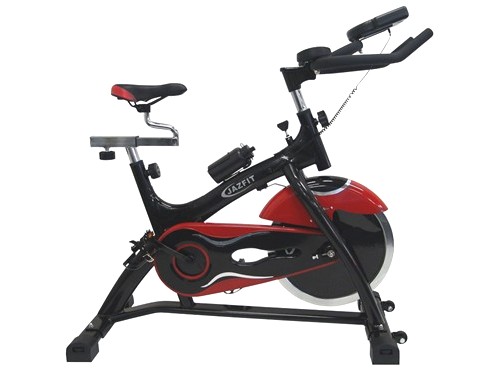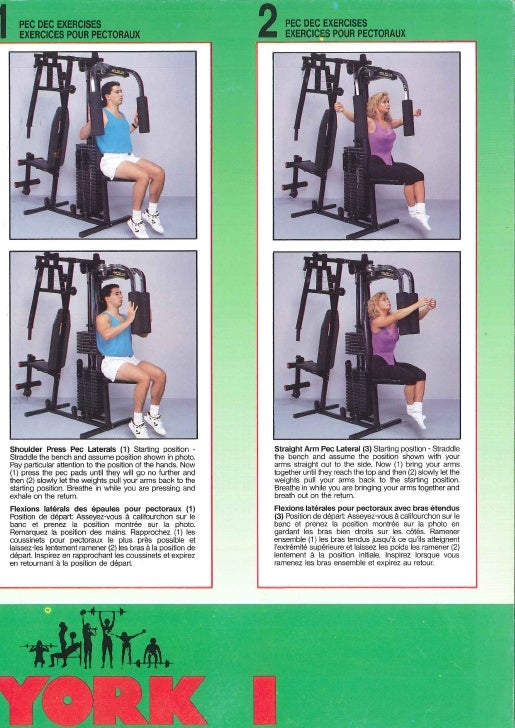York 2015 Exercise Manual
Tom Brady, the New England Patriots’ successful and durable quarterback, has a new book. It is entitledand it is large and handsome, filled with photographs of Tom Brady, who also is large and handsome. Should you buy this book? The answer probably depends on how you feel about science, branding and tomatoes. The book, the first by Mr.

Jan 31, 2010 - replacement york 2002 multi gym exercise manual - Yukon Incline Olympic Weight Bench question. Mar 07, 2015 York Exercise & Fitness. Downloading pdf York 2015 exercise manual, then you have come on to correct website. We have York 2015 exercise manual PDF, doc, ePub, DjVu, txt forms.
Just Dance 2015 Exercise
Brady (with the assistance of ghost writer Peter Smith), is not an autobiography. Rather, it is a celebrity self-help manual that details the Mr. Brady developed in conjunction with Alex Guerrero, his close friend, business partner and “body coach.” The TB12 Method, which takes its name from Mr. Brady’s initials and jersey number, is built on Mr. Guerrero’s theory that for good health and prolonged athletic performance, we need our muscles to be “pliable.” Pliable muscles, which are not the same as flexible muscles, are “soft” and not “dense,” he and Mr. Brady assert.
2015 Exercise Recommendations
Dense, stiff muscles are easily injured, according to the book, because they are not resilient and can tear during physical activity. On the other hand, soft, pliable muscles absorb the stresses and impacts that occur during daily life and sports, Mr. Brady writes, as when, for instance, a 300-pound lineman slams into your side.
At that moment, he writes, “My brain is thinking only lengthen and soften and disperse.” Mr. Brady attributes much of his unusually long N.F.L. Career and the relatively little playing time he has lost to injuries to this kind of gnomic self-talk and his muscular pliability. But most of us are not pliable, he tells us, and our workouts are not helping. Standard weight training and conditioning exercises, such as running and sprints, tighten and harden our muscles, he writes, opening us to injury.

Instead, we should do less weight training or conditioning and more of something else. It involves “targeted, deep-force muscle work,” Mr. Brady writes.
“Think of a deep, rigorous massage, but much more focused, and in my case using complex techniques based on an understanding of the biomechanics of what it takes for me to throw a football and function at peak levels as an athlete who accelerates, decelerates, runs, cuts, and more, as well as the daily acts of living that complement my off-field life.” Got it? Thankfully, Mr. Brady and Mr. Guerrero amplify and simplify their instructions as the book continues. Mere massage does not produce pliability, they write. You must contract muscles while also stretching and pummeling them, preferably with high-tech, vibrating foam rollers or vibrating spheres, Mr. Brady writes.
These are available at for $150 and up. The problem with this notion is that exercise science has never heard of muscle pliability. “It’s balderdash,” says Stuart Phillips, a professor at McMaster University in Hamilton, Ontario, and an expert in muscle physiology. In scientific terms, he says, muscles that are soft tend to be muscles that are sick. “When folks do little or nothing, as, for instance, during bed rest, then their muscles get very soft,” he says. Brady and Mr.
Guerrero have not conducted or published clinical trials of muscle pliability. Neither has anyone else. On the huge PubMed online database of published science, I found only one experiment that contains the words pliability and muscles, and it concerned the efficacy of different embalming techniques. The book’s sections on diet and nutrition similarly lack supporting evidence, although not common sense. Brady writes that, like him, we should avoid sugary foods and other processed carbohydrates. The TB12 Method advocates for a plant-based, locally sourced, organic diet. It also, however, strays into the eccentric when it suggests that we eschew foods in the nightshade family, including tomatoes, strawberries, eggplants and potatoes, focus on foods high in alkalinity — such as artichokes, dandelion greens and escarole, and cut back on foods that supposedly raise acid levels in our blood, like beef, salmon, butter and cheese.
Brady does not explain or justify these dietary choices in this book. For that, we need to consult the separate TB12 Nutrition Manual (available for $200 at tb12store.com). Mainstream nutritional science, meanwhile, is fine with tomatoes and does not support alkaline diets. Artichokes are healthful, but not because they blunt the acidity of our blood (which is what most proponents of alkaline diets claim for these foods). We have kidneys for that. It’s worth noting that Mr.
Guerrero, a self-taught exercise guru, has twice been investigated by the Federal Trade Commission for about products he developed, including a. The book does not mention his past. Still, the TB12 Method is not without value. The book’s tone is humble and encouraging. Brady prefaces his more outlandish health claims with such qualifiers as “I believe” or “This is what works for me.”. Most important, the book provides useful photographic and textual instructions for dozens of body-weight resistance training exercises, many done with resistance bands. (The TB12 Method branded set is available for $160 at the company’s website).
These exercises could credibly improve our flexibility — a muscular attribute that actually exists — and joint range of motion, says Malachy McHugh, the director of research at the Nicholas Institute of Sports Medicine and Athletic Trauma at Lenox Hill Hospital in New York City. “Interventions that can maintain the functional range of motion of a series of muscle groups are critical to maintaining function as we get older,” Dr. Plus, “The TB12 Method” physical book weighs about three pounds, according to my bathroom scale, and that is a nice heft for light resistance training.

The ninth edition of this book consists of a clinical practice guidelines for physical activity from the American College of Sports Medicine. These guidelines began in 1975 and have been continually updated every 4–6 years.
Iala vts manual 2017. The VTS committee focuses on all aspects of VTS, including the expanding role of vessel monitoring for maritime safety, environmental protection, and security. The committee reviews and updates the IALA VTS manual, a comprehensive reference document. A new edition of the VTS manual is published every four years. Technical committees There are four technical committees: • vessel traffic service (VTS) • e-Navigation • aids to navigation requirements and management (ANM) • aids to navigation engineering and sustainability (ENG). The committee aims to develop and review VTS related IALA documentation on issues such as: • training personnel • operational procedures • equipment requirements.
There are over 50 contributing authors to this edition alone, consisting of many health professionals and researchers. The book consists of 11 chapters divided into 3 main sections: Health appraisal and risk assessment, Exercise testing, and Exercise prescription. The most valuable new addition is a chapter titled “Behavioural Theories and Strategies for Promoting Exercise”. This chapter explains theories as to why individuals adapt sedentary lifestyles and provides strategies to promote an active lifestyle.
This book is a useful resource for any health care provider that deals with exercise in their practice. It supports the public health message that practitioners should be ensuring that patients are participating in an active lifestyle in a safe, effective manner. This book highlights how to assess activity levels and prescribed exercises for a variety of conditions and special populations. It focuses on the clinical applicability of exercise testing and health screening before activity.
Each chapter has summary points to ensure the reader is aware of the take home concepts. After reading this book you can feel confident that you have an up to date, reliable resource for exercise testing and prescription in the clinic.